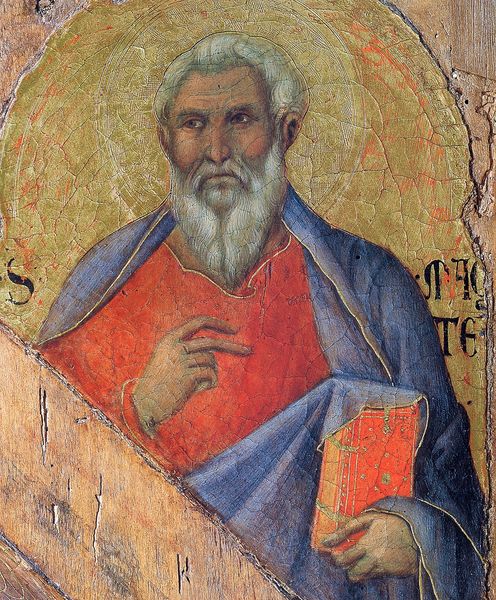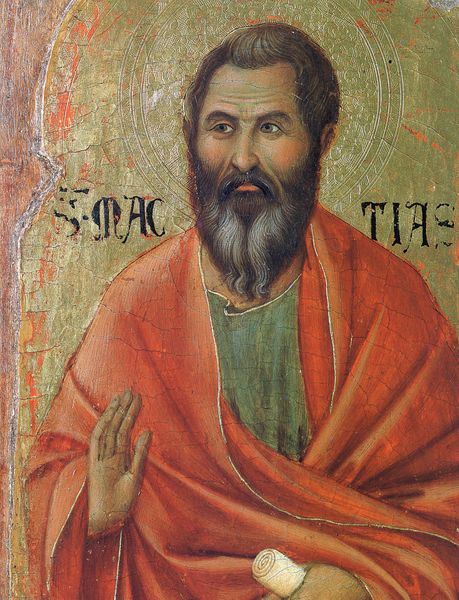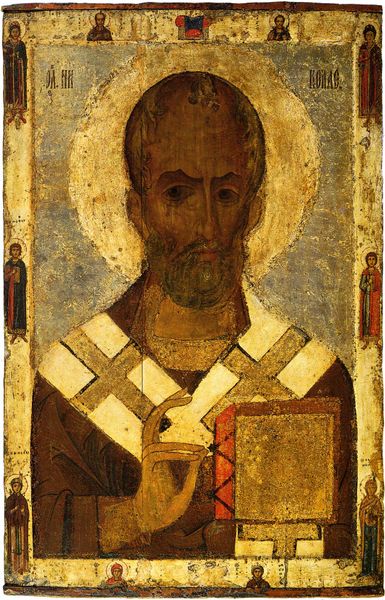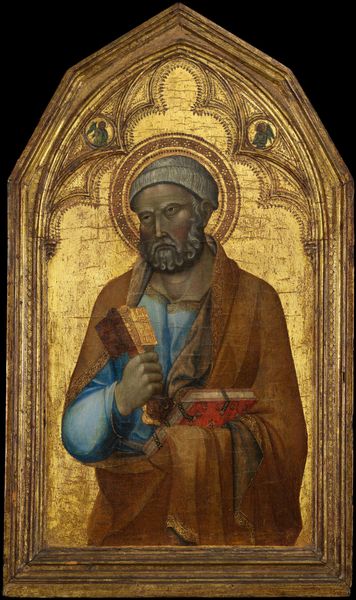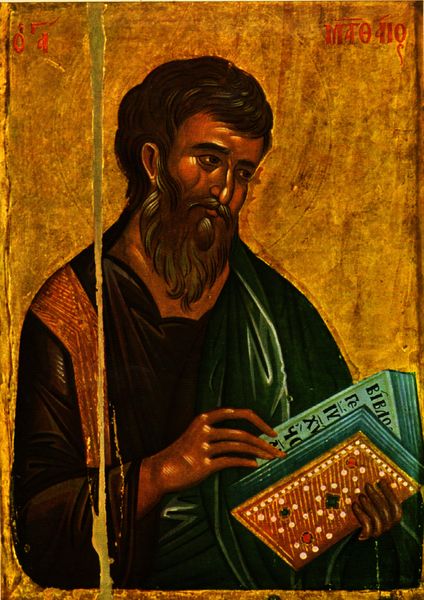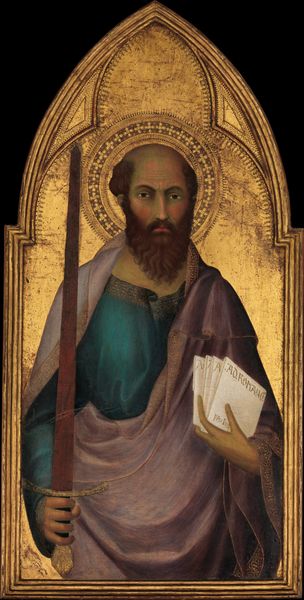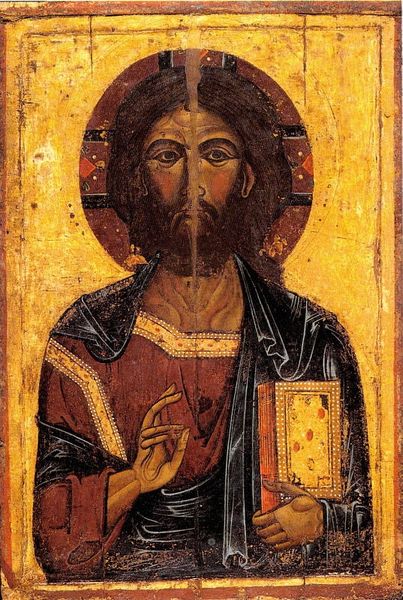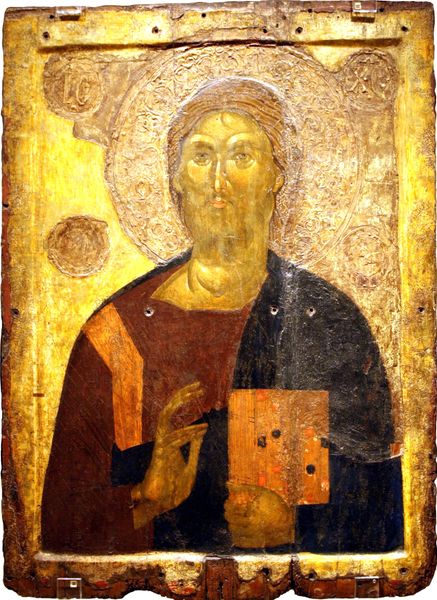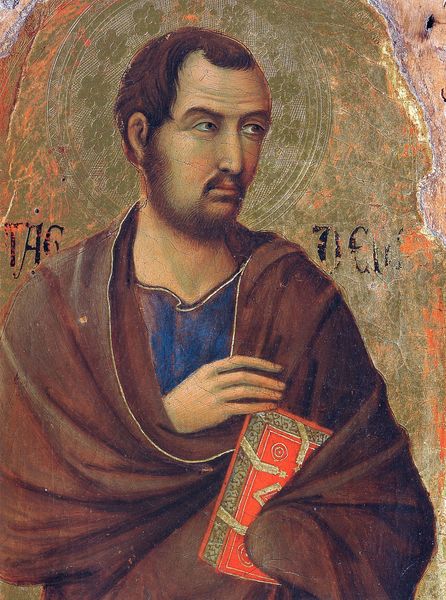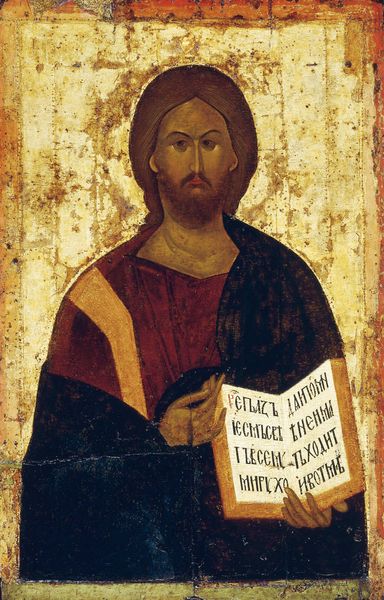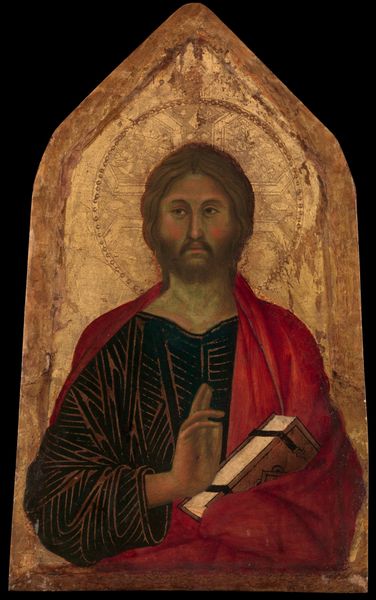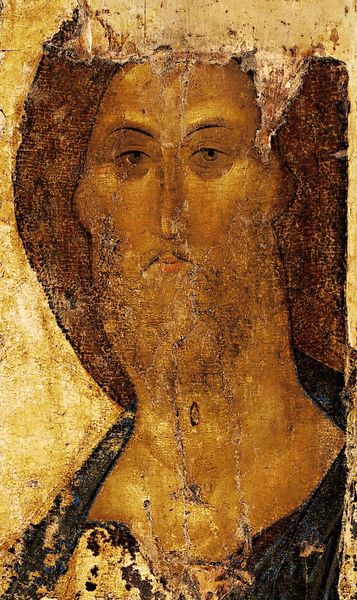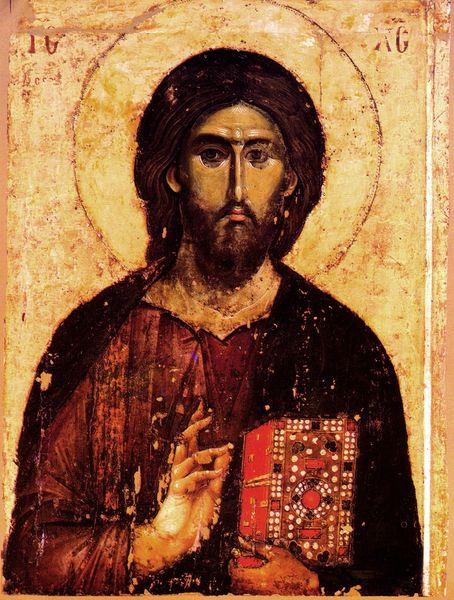
tempera, painting, fresco
#
portrait
#
byzantine-art
#
medieval
#
tempera
#
painting
#
fresco
#
oil painting
#
christianity
#
history-painting
#
portrait art
Dimensions: 160 x 110 cm
Copyright: Public domain
Editor: Here we have Andrei Rublev’s “Apostle Paul” from 1410, currently residing in the Tretyakov Gallery in Moscow. Painted in tempera, there is something incredibly haunting about this depiction; a solemn face with just a touch of kindness around the eyes. What can you tell me about the symbolism in this icon? Curator: What strikes me first is how Rublev presents Paul: contemplative, holding what seems to be a text, perhaps his own epistles. Consider the weight this imagery carries – Paul, a figure central to the formation of Christian doctrine, depicted not as a fiery orator, but as a scholar, almost burdened by the intellectual and spiritual labor. What does his downcast gaze evoke for you? Editor: I suppose it suggests humility, and maybe introspection? Especially given what you’ve said about him holding his own letters, thinking through his teachings and actions. Curator: Precisely. And think about the halo, nearly blending into the background. It signifies sanctity, but it's understated, which makes you consider its role: is it announcing his holiness, or subtly reminding us of his humanity despite his saintly status? The artist plays with the expected visual cues here. Notice, too, how the severe, almost geometrical folds of the drapery contrast with the gentle curves of his face and beard. This opposition suggests a tension between earthly form and divine purpose. Do you find that interesting? Editor: Yes, definitely. The tension really makes you stop and consider how the painting reflects inner conflict, maybe Paul’s own struggle to understand the divine. Curator: Indeed. It reveals cultural memory of him while allowing individual emotional interpretation. Considering his history, this image evokes a range of human experience and invites contemplation. Editor: This has definitely changed how I initially perceived the painting. I had focused mainly on its austerity. Now I appreciate the layered symbolism within. Curator: That is the power of icons! They teach and remind while inviting viewers into a space of reflection.
Comments
No comments
Be the first to comment and join the conversation on the ultimate creative platform.
